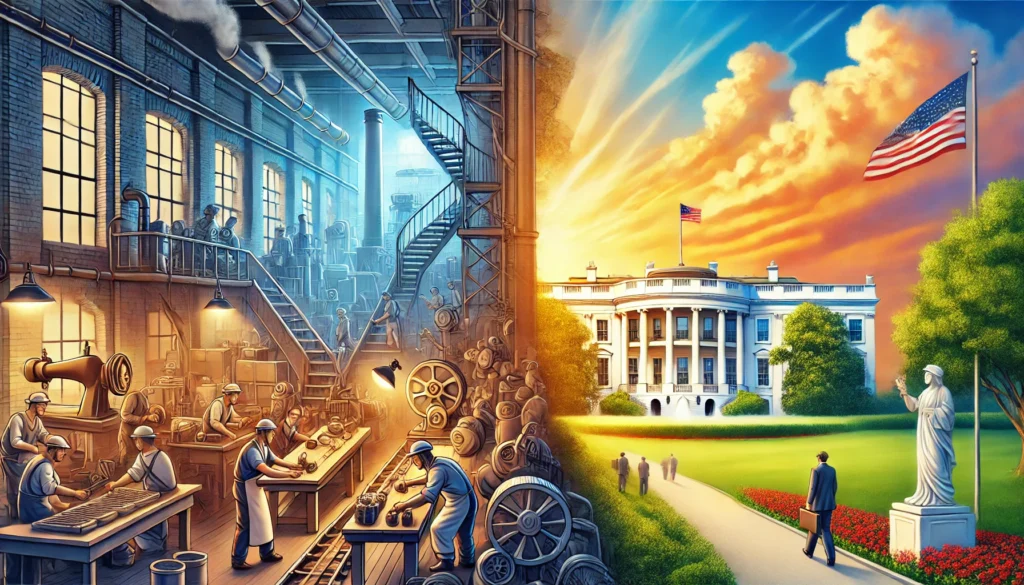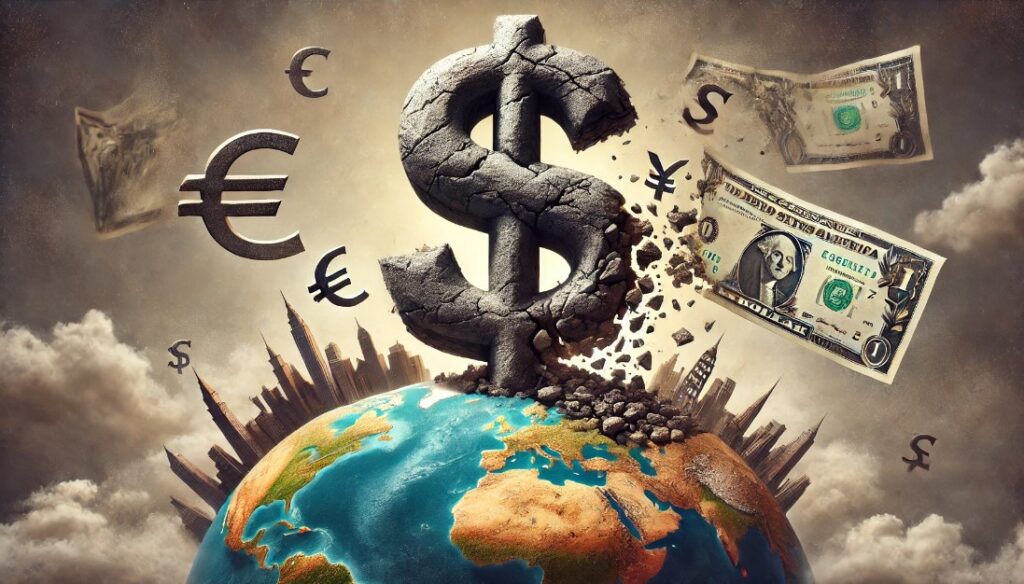“The working class is my home country, and my future is linked with the proletariat.” –– Andrei Platonov
The 2024 election wasn’t just another race—it was a reckoning. America’s working class had been sidelined for decades. They were the ones keeping the lights on, fixing pipes, and building houses while Wall Street execs and Silicon Valley tycoons counted their billions. But this time, the people who work with their hands decided they’d had enough. They put Donald Trump back in the White House, and it wasn’t subtle. It was a punch straight to the ruling class’s jaw.
- Working-Class Power: The 2024 election showcased the working class’s renewed political clout, with Trump leveraging their support to secure victory by focusing on economic discontent and immigration.
- Shifting Party Bases: As Democrats align more with elites and cultural issues, Republicans have gained traction with small business owners, skilled laborers, and Latino voters.
- Economic Realignment: AI threatens white-collar jobs, potentially boosting demand for blue-collar workers and solidifying their importance in future political landscapes.
This shift didn’t happen overnight. It’s been brewing for years. The pandemic accelerated it. While elites hid behind Zoom calls, the working class kept the country running. Truckers. Nurses. Grocery store workers. The ones who couldn’t afford to stay home. The ones who saw their neighborhoods change as immigration surged and wages stagnated.
In 2024, Trump tapped into that anger. He didn’t just win among low-income voters—he dominated. Non-college voters gave him a 13-point edge. Union households—once a Democratic stronghold—flipped, giving him numbers not seen since Reagan. Even Latinos, long considered a Democratic base, shifted. Over 40% voted for Trump, with Latino men leading the charge. They weren’t buying the progressive elites’ promises anymore. They were living the consequences.
But this isn’t just an American story. Across the West, from France to Germany to the UK, working-class voters are revolting. Immigration is the flashpoint. In the U.S., Gallup found that 60% of Americans want to reduce immigration. Even among Latinos, a majority supports stricter enforcement. These voters are done with being told what to think by people who’ve never stepped foot in their neighborhoods.
The political map is redrawing itself. The Democrats have become the party of the elite—Wall Street, Big Tech, and academics. Their policies? Great for billionaires. Not so much for factory workers or electricians. Meanwhile, Republicans are turning into the party of small business owners, artisans, and skilled workers. It’s not the GOP of old. These voters don’t care about tax cuts for the rich. They want fair trade deals and job security.
The shift isn’t just cultural—it’s economic. AI is gutting white-collar jobs. Software engineers, analysts, even writers are being replaced. But plumbers? Electricians? Construction workers? Robots aren’t ready for that yet. The demand for skilled labor is surging. As AI pioneer Rony Abovitz put it, the future belongs to “technically capable blue-collar workers.” Maybe it’s time to forget learning to code and start learning a trade.
The Democrats face a choice. They can keep chasing woke cultural battles and green policies that hurt the working class. Or they can remember what it means to fight for the people. Not just the coastal elites. Everyone.
For now, the working class is far from beaten. They’re the ones who build, fix, and move America. And they’re not going anywhere. Political power, like a hammer, is best wielded by those who know how to use it.
The Morning Muster



